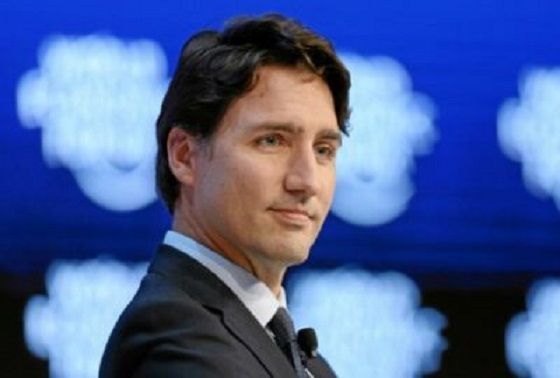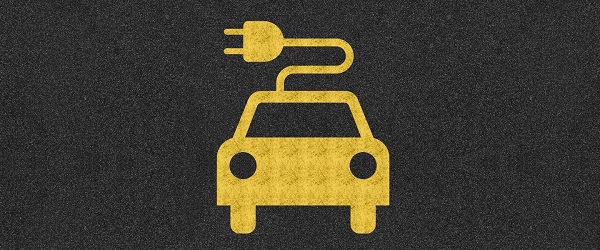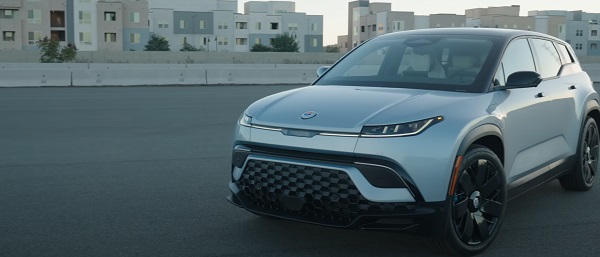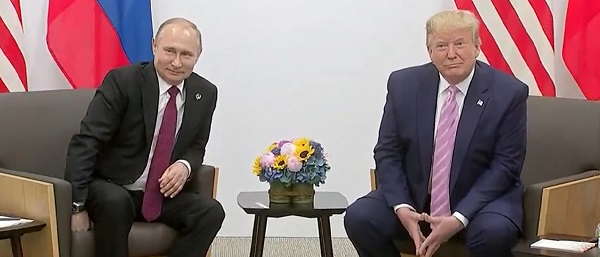Automotive
Ottawa’s tariffs undercut Ottawa’s EV mandate

From the Fraser Institute
Asian countries such as China and Japan were not particular threats to prior automotive markets because North America’s massive and diverse internal combustion vehicle markets were capable of relatively lower-cost production of superior quality vehicles. That’s not shaping up to be the case for EVs, which are vastly more expensive coming off North American assembly lines than in China and other Asian countries.
Seemingly every week, Canada’s electric vehicle (EV) transition policy framework grows more incoherent. The goal of Canada’s EV policy is to ensure all new light-duty vehicle sales in Canada are zero-emission vehicles (ZEVs), with a strong emphasis on battery-electric vehicles, by 2035.
The latest incoherence is Prime Minister Trudeau’s announcement of 100 per cent tariffs on Chinese EV imports and 25 per cent tariffs on Chinese steel and aluminum imports (the Canada needs to build EVs). This will directly undercut the government’s EV transition targets by denying Canadians access to affordable electric cars.
The stated rationale for the tariffs is, according to Finance Minister Chrystia Freeland, that the “Chinese are trying to corner the North American EV market by dumping subsidized vehicles into it” and that “China has an intentional, state-directed policy of overcapacity and oversupply designed to cripple our own industry” so “we simply will not allow that to happen to our EV sector.” And arguably, some of that is probably reasonable.
Tariffs are generally understood as protectionist mechanisms, designed to shield domestic industries from lower-cost foreign competition by making imported goods more expensive. Additionally, they can serve as punitive measures to penalize countries for hostile economic or political actions. By limiting access to one’s markets, tariffs can reduce the profits of the targeted country, thereby pressuring it to alter behaviours or policies. When imposed against countries intentionally sabotaging markets, tariffs may be considered a legitimate response.
But tariffs on China will also hurt Canadians by keeping lower-cost goods out of our market, leaving them with only higher-priced goods and services provided by protected domestic industries that need not fear price competition and thus feel little pressure to lower the prices for their goods and services.
And this is part of the incoherence of the new Trudeau tariff policy. The Trudeau EV mandates are set to create, in essence, a monopoly on the types of automotive technologies (again, EVs) allowed to be used in Canada, which other countries can manufacture more cheaply than domestic manufacturers. Asian countries such as China and Japan were not particular threats to prior automotive markets because North America’s massive and diverse internal combustion vehicle markets were capable of relatively lower-cost production of superior quality vehicles. That’s not shaping up to be the case for EVs, which are vastly more expensive coming off North American assembly lines than in China and other Asian countries.
By driving up the costs of buying EVs in Canada, the Trudeau government will directly undercut its EVs-by-2035 mandate. If people can’t afford EVs, as most currently cannot, the EV mandate targets are doomed. People will simply hold their old internal-combustion vehicles for longer. This trend is already observable in the United States where new vehicles have become more expensive. Americans are holding on to their vehicles longer than ever, with the average vehicle age reaching 13.6 years.
The Trudeau government’s highest priority has been the war on climate change, which various government leaders in Canada and around the world have proclaimed the greatest threat to people and the planet in human history. But if the government is sincere about this, then the priority should be to maximize Canadians’ access to cheaper EVs, and the prime minister should be largely indifferent to where Canadians choose to source those EVs. Indeed, he should urgently want low-cost EVs available to Canadians for there to be any hope of achieving his all-EV by 2035 goal.
Author:
Automotive
Governments continue to support irrational ‘electric vehicle’ policies

From the Fraser Institute
Another day, another electric vehicle (EV) fantasy failure. The Quebec government is “pulling the plug” on its relationship with the Northvolt EV battery company (which is now bankrupt), and will try to recoup some of its $270 million loss on the project. Quebec’s “investment” was in support of a planned $7 billion “megaproject” battery manufacturing facility on Montreal’s South Shore. (As an aside, what normal people would call gambling with taxpayer money, governments call “investments.” But that’s another story.)
Anyway, for those who have not followed this latest EV-burn out, back in September 2023, the Legault government announced plans to “invest” $510 million in the project, which was to be located in Saint-Basile-le-Grand and McMasterville. The government subsequently granted Northvolt a $240 million loan guarantee to buy the land for the plant, then injected another $270 million directly into Northvolt. According to the Financial Post, “Quebec has lost $270 million on its equity investment… but still had a senior secured loan tied to the land acquired to build the plant, which totals nearly $260 million with interest and fees.” In other words, Quebec taxpayers lost big.
But Northvolt is just the latest in a litany of failure by Canadian governments and their dreams of an EV future free of dreaded fossil fuels. I know, politicians say that it’s a battle against climate change, but that’s silly. Canada is such a small emitter of greenhouse gases that nothing it could do, including shutting down the entire national economy, would significantly alter the trajectory of the climate. Anything Canada might achieve would be cancelled out by economic growth in China in a matter of weeks.
So back to the litany of failed or failing EV-dream projects. To date (from about 2020) it goes like this: Ford (2024), Umicore battery (2024), Honda (2025),General Motors CAMI (2025), Lion Electric (2025), Northvolt (2025). And this does not count projects still limping along after major setbacks such as Stellantis and Volkswagen.
One has to wonder how many tombstones of dead EV fantasy projects will be needed before Canada’s climate-obsessed governments get a clue: people are not playing. Car buyers are not snapping up these vehicles as government predicted; the technologies and manufacturing ability are not showing up as government predicted; declining cost curves are not showing up as government predicted; taxpayer-subsidized projects keep dying; the U.S. market for Canada’s EV tech that government predicted has been Trumped out of existence (e.g. the Trump administration has scrapped EV mandates and federal subsidies for EV purchases); and government is taking the money for all these failed predictions from Canadian workers who can’t afford EVs. It really is a policy travesty.
And yet, like a bad dream, Canada’s governments (including the Carney government) are still backing an irrational policy to force EVs into the marketplace. For example, Ottawa stills mandates that all new light-duty vehicle sales be EVs by 2035. This despite Canadian automakers earnest pleas for the government to scrap the mandate.
Canada’s EV policy is quickly coming to resemble something out of dysfunctional-heroic fiction. We are the Don Quixotes, tilting futilely at EV windmills, and Captain Ahabs, trying to slay the dreaded white whale of fossil-fuelled transportation with our EV harpoons. Really, isn’t it time governments took a look at reality and cut their losses? Canada’s taxpayers would surely appreciate the break.
Automotive
Big Auto Wants Your Data. Trump and Congress Aren’t Having It.


From the Daily Caller News Foundation
Congress is not going to allow Big Auto to sideline consumer privacy and safety while getting subsidized massively by the federal government.
That is because, in late September, by an overwhelming vote of 50 to 1, Chairman Brett Guthrie’s (R-KY) House Energy & Commerce Committee joined the Senate Commerce, Science, and Transportation Committee in passing the AM Radio for Every Vehicle Act.
This legislation is in response to some automakers removing AM radios from new model vehicles despite pleas from America’s public safety community not to do so.
Dear Readers:
As a nonprofit, we are dependent on the generosity of our readers.
Please consider making a small donation of any amount here.
Thank you!
“They’d rather force consumers to use their infotainment devices — which collect and sell their third-party data — than protect American lives,” Corey Lewandowski, President Trump’s 2016 campaign manager and senior adviser to his 2020 and 2024 campaigns, stated.
The entirety of America’s public safety community spanning the federal, state, and local levels, insists AM radio remaining in cars is critical for protecting the nation’s emergency alerting systems. These systems rely heavily upon AM radio, the only communication method that has stayed reliably accessible during many disasters such as the Sept.11 terrorist attack and major disasters like Hurricanes Katrina, Sandy, and most recently, Helene.
Brendan Carr, the current chairman of President Trump’s FCC, nominated by President Trump, has also endorsed the AM Radio for Every Vehicle Act. In a statement, Carr said that “millions of Americans depend on the value of AM radio and the local news that AM broadcasters offer in communities across the country.” He also recounted hearing firsthand stories of Hurricane Helene victims who “could only access lifesaving information in the days following the storm by tuning into their AM radios.”
AM radio also serves another purpose that the elites in Silicon Valley and Detroit often forget: it keeps rural and working-class America connected. Millions of people outside the big cities rely on AM for local news, farm reports, weather alerts, and even community events. For many small towns, AM stations are a lifeline—far more reliable than expensive streaming services or spotty cell coverage. Pulling it out of cars is yet another way of telling Middle America: “you don’t matter.”
Of course, no good idea in Washington is safe from special interests.
Despite the broad support within Congress, the administration, and throughout the public safety and first responder communities, the bill has faced a full-court press by the musicFIRST Coalition — a group backed by the Recording Industry of America — to tank the legislation unless it is tied to unrelated music royalty reform legislation. That’s cronyism politics at its worst—holding public safety hostage to squeeze out another payday.
However, now that the AM Radio for Every Vehicle Act has passed both committees by overwhelming margins, the only stop left for the legislation is the House and Senate Floor — meaning Speaker Mike Johnson (R-LA) and House Majority Leader John Thune (R-SD) must call it up for a roll call vote.
At the heart of this fight is more than just whether a radio dial stays in your dashboard. It’s about whether Americans can trust that their safety won’t be sacrificed for corporate profit.
It’s also about data privacy. Automakers and Big Tech are eager to funnel drivers into infotainment systems that monitor every move, harvest personal information, and sell it to the highest bidder. AM radio doesn’t spy on you. It doesn’t crash when the grid goes down. It doesn’t put profit ahead of people. It just works.
For the sake of both public safety and personal freedom, Congress should make sure it stays that way.
Ken Blackwell (@KenBlackwell) is an adviser to the Family Research Council and a chair at the America First Policy Institute. He is a former Mayor of Cincinnati, Ohio, Ohio Treasurer and Secretary of State, and U.S. Ambassador to the United Nations Human Rights Commission. He is also a former member of the Trump transition team.
-

 espionage2 days ago
espionage2 days agoBreaking: P.E.I. Urges RCMP Probe of Alleged Foreign Interference, Money Laundering
-

 Business21 hours ago
Business21 hours agoCanada has an energy edge, why won’t Ottawa use it?
-

 Alberta2 days ago
Alberta2 days agoPremier Smith addresses the most important issue facing Alberta teachers: Classroom Complexity
-

 Business21 hours ago
Business21 hours agoFederal Budget 2025: A responsible media would ensure Canadians know about the dismal state of federal finance
-

 Alberta2 days ago
Alberta2 days agoAlberta taxpayers should know how much their municipal governments spend
-

 Business1 day ago
Business1 day agoCutting Red Tape Could Help Solve Canada’s Doctor Crisis
-

 Daily Caller1 day ago
Daily Caller1 day agoTrump, Putin Agree On High-Stakes Meetings To Negotiate End To Ukraine War
-

 International9 hours ago
International9 hours agoPoland’s president signs new zero income tax law for parents with two children





